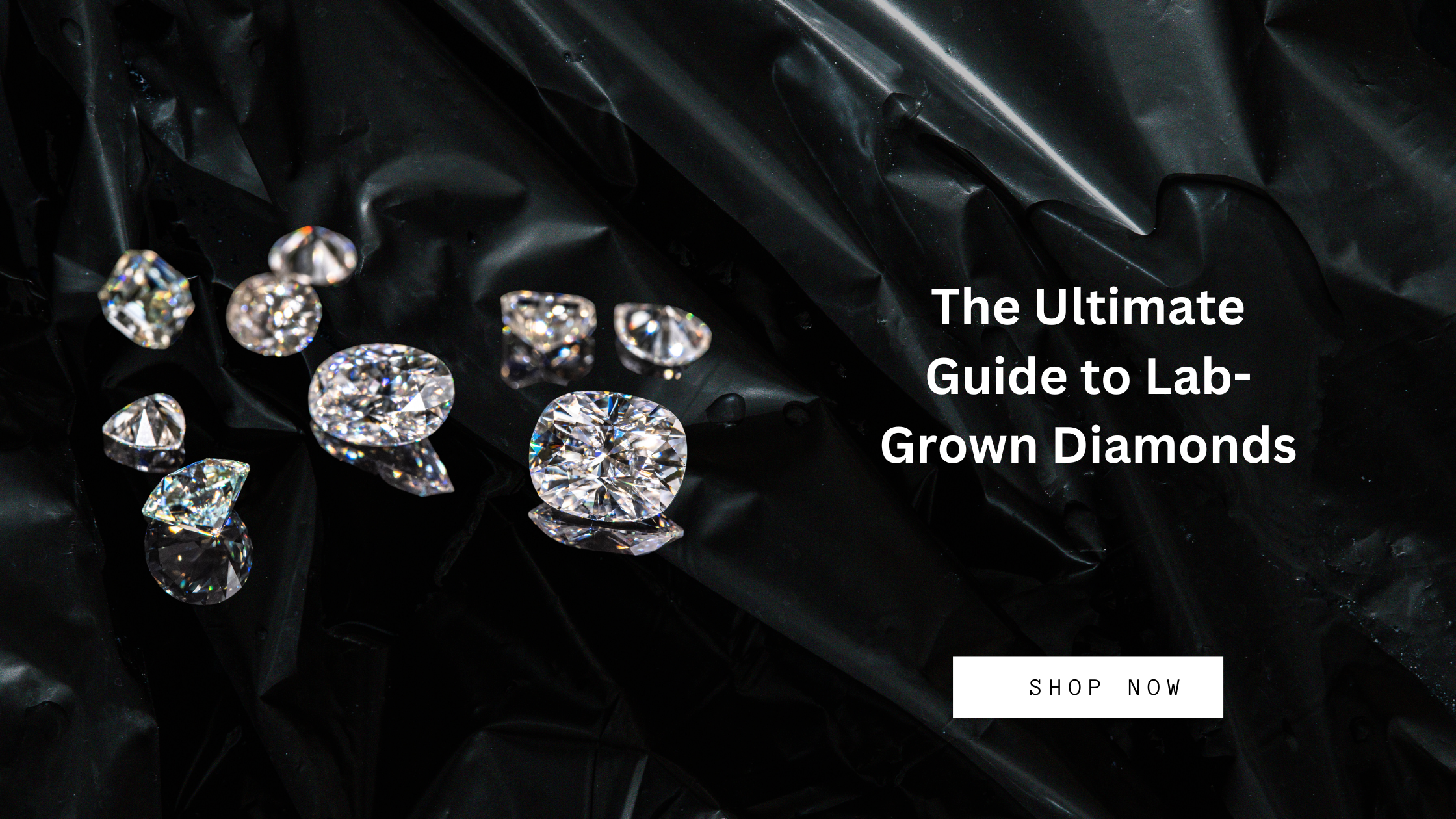
The Ultimate Guide to Lab-Grown Diamonds
Introduction
Lab-grown diamonds, often termed synthetic or man-made diamonds, have gained significant popularity in recent years. These diamonds offer a sustainable and ethical alternative to natural diamonds. This comprehensive guide explores various facets of lab-grown diamonds, answering key questions and providing insights into their benefits and drawbacks.
What are Lab-Grown Diamonds?
Lab-grown diamonds are diamonds created in controlled laboratory environments using advanced technological processes. Unlike natural diamonds, which form over billions of years beneath the Earth's surface, lab-grown diamonds can be produced in weeks or months. Despite their different origins, lab-grown diamonds possess the same physical, chemical, and optical properties as natural diamonds.

Are Lab Diamonds Real?
Yes, lab diamonds are real diamonds. They are composed of the same carbon atoms arranged in a crystal structure. The primary difference lies in their origin: lab-grown diamonds are created in a lab, whereas natural diamonds are mined from the Earth. Both types of diamonds exhibit the same brilliance, hardness, and thermal conductivity, making lab-grown diamonds indistinguishable from natural diamonds to the naked eye.
Lab Diamonds vs. "Real" Diamonds - What are the Differences?
The term "real" often refers to natural diamonds. The differences between lab-grown and natural diamonds include:
1. Origin
- Natural Diamonds: Formed over billions of years deep within the Earth under extreme pressure and temperature conditions.
- Lab-Grown Diamonds: Created in a laboratory using advanced technological processes that mimic the natural diamond formation process. These can be produced in a matter of weeks or months.
2. Physical and Chemical Properties
- Natural Diamonds: Composed of carbon atoms arranged in a crystal structure, giving them their renowned hardness and brilliance.
- Lab-Grown Diamonds: Identical to natural diamonds in terms of chemical composition, physical properties, and optical characteristics. Both are pure carbon crystals with the same hardness and sparkle.
3. Environmental Impact
- Natural Diamonds: Mining natural diamonds can have significant environmental impacts, including habitat destruction, soil erosion, and water pollution.
- Lab-Grown Diamonds: Generally have a smaller environmental footprint as they do not require large-scale mining operations. The production process is more controlled and less damaging to the environment.
4. Ethical Considerations
- Natural Diamonds: The diamond mining industry has faced criticism for human rights abuses and the funding of conflicts through the sale of "blood diamonds."
- Lab-Grown Diamonds: Considered a more ethical choice as they are not associated with conflict zones and the labor practices involved in their production are typically more regulated.
5. Cost
- Natural Diamonds: Typically more expensive due to their rarity and the costs associated with mining and distribution.
- Lab-Grown Diamonds: Generally 20-40% cheaper than natural diamonds of comparable size and quality, making them an attractive option for budget-conscious consumers.
6. Resale Value
- Natural Diamonds: Often retain higher resale value and are considered an investment.
- Lab-Grown Diamonds: May have lower resale value and are not traditionally viewed as investments.
7. Market Perception
- Natural Diamonds: Viewed as the classic choice, often associated with tradition and timelessness.
- Lab-Grown Diamonds: Increasingly accepted, especially among environmentally and ethically conscious consumers. However, some traditionalists still prefer natural diamonds.
8. Availability and Variety
- Natural Diamonds: Limited by natural occurrence, which can restrict size, color, and quality options.
- Lab-Grown Diamonds: Offer a broader range of sizes, shapes, and colors due to the controlled manufacturing process. This allows for greater customization.
9. Certification
- Natural Diamonds: Certified by organizations like the Gemological Institute of America (GIA) based on the 4Cs (carat, cut, color, clarity).
- Lab-Grown Diamonds: Also certified by GIA and other reputable organizations using the same standards, ensuring quality and authenticity.
How are Lab-Grown Diamonds Made?
Lab-grown diamonds are produced using two primary methods: High Pressure High Temperature (HPHT) and Chemical Vapor Deposition (CVD).
Lab-Made Diamonds - Two Popular Methods
- High Pressure High Temperature (HPHT):
In the HPHT method, carbon is subjected to high pressure and high temperature conditions similar to those found deep within the Earth.
A small diamond seed is placed in a carbon source, and the high pressure and temperature cause the carbon atoms to crystallize around the seed, forming a diamond.
- Chemical Vapor Deposition (CVD):
The CVD method involves placing a diamond seed in a chamber filled with carbon-rich gas, such as methane.
The gas is ionized into plasma, causing carbon atoms to deposit onto the seed and form a diamond layer by layer.
Are Lab-Grown Diamonds Good?
Lab-grown diamonds are considered good for various reasons. They offer the same beauty and durability as natural diamonds while being more environmentally friendly and ethically sourced. Additionally, lab-grown diamonds are available at a lower cost, making them an attractive option for budget-conscious consumers.

Pros of Buying a Lab-Grown Diamond
- Cost-Effective: Lab-grown diamonds are typically 20-40% less expensive than natural diamonds of similar quality.
- Ethical and Sustainable: These diamonds are free from the ethical concerns associated with diamond mining, such as conflict diamonds and environmental degradation.
- Quality and Variety: Lab-grown diamonds come in a wide range of sizes, shapes, and colors, offering consumers more choices.
- Identical Properties: Lab-grown diamonds possess the same physical, chemical, and optical properties as natural diamonds, making them indistinguishable to the naked eye.
Cons of Buying a Lab-Grown Diamond
- Resale Value: Lab-grown diamonds may have a lower resale value compared to natural diamonds.
- Perception: Some consumers and traditionalists may still view lab-grown diamonds as inferior to natural diamonds.
- Market Acceptance: While acceptance is growing, lab-grown diamonds are still relatively new to the market, which can affect demand and perception.
GIA Certified Lab Created Diamonds
The Gemological Institute of America (GIA) offers certification for lab-grown diamonds, ensuring they meet the same rigorous standards as natural diamonds. A GIA certificate provides detailed information about the diamond's 4Cs (carat, cut, color, clarity) and confirms its lab-grown origin. GIA certification adds credibility and assurance to the purchase of lab-grown diamonds.
Should I Get a Lab Grown Diamond Engagement Ring?
Choosing a lab-grown diamond for an engagement ring depends on personal preferences and values. Consider the following factors:
- Budget: Lab-grown diamonds offer a more affordable option without compromising on quality.
- Ethical and Environmental Impact: If ethical sourcing and environmental sustainability are important to you, lab-grown diamonds are a great choice.
- Aesthetics: Lab-grown diamonds are visually identical to natural diamonds, ensuring your engagement ring will be just as stunning.

Do Lab-Grown Diamonds Cost Less Than Natural Diamonds?
Yes, lab-grown diamonds typically cost less than natural diamonds. The price difference can be significant, with lab-grown diamonds being 20-40% cheaper. This cost advantage allows consumers to purchase larger or higher quality diamonds within the same budget.
How Long Have Lab-Grown Diamonds Been Around?
Lab-grown diamonds have been around since the 1950s, but significant advancements in technology have made them more accessible and affordable in recent decades. Initially used for industrial purposes, lab-grown diamonds have evolved to meet the demand for jewelry, offering a viable alternative to natural diamonds.

Conclusion
Lab-grown diamonds represent a modern and ethical choice for consumers seeking the beauty and durability of diamonds without the environmental and ethical concerns associated with mining. With identical properties to natural diamonds and a lower price point, lab-grown diamonds are an attractive option for various applications, from engagement rings to everyday jewelry. As technology advances and market acceptance grows, lab-grown diamonds are set to become an increasingly popular choice in the jewelry industry.


